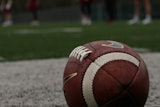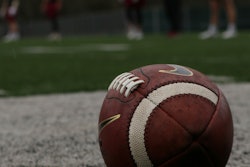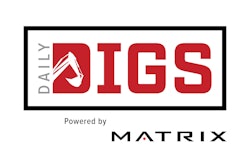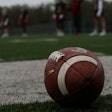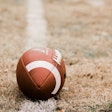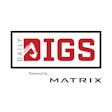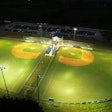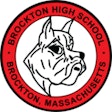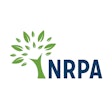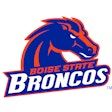![A synthetic turf football/soccer field also accomodates the wide variety of community events now held at Breese Stevens Field. [Photo by Justin Nuoffer]](https://img.athleticbusiness.com/files/base/abmedia/all/image/2019/05/ab.outdoor519_feat.png?auto=format%2Ccompress&q=70&w=400)
Entering downtown Madison from the east, one can see Wisconsin's Capitol building for miles along East Washington Avenue. Until recently, the boulevard approach to that skyline-defining landmark was flanked by blocks of tired buildings and used car lots. One such structure was hardly identifiable from the street — a fortress-like wall of sandstone topped by stadium light fixtures and terminating in a grandstand curiously positioned within the grid.
"What's behind that wall?" asks Madison Parks superintendent Eric Knepp, mimicking people's once-common reaction upon first glance at the city-owned structure.
The answer has always been Breese Stevens Field, a Depression-era baseball park that over the intervening decades had been resigned to hosting a smattering of athletic events — high school soccer and football, mostly, and by the early 2000s, not much of either.
Yet, despite its relative anonymity along the streetscape, in 2015 Breese Stevens was accepted into the National Register of Historic Places. The honor may seem all the more ironic given that exactly one year earlier, the stadium had been stripped of a significant symbol of its past in a decision that would set the stage for its viable future. In 2014, the natural grass field at Breese Stevens was replaced with synthetic turf.
"It has been critical to the revitalization efforts," Knepp says of the $1 million conversion. "I think the most important thing has been policy-maker and neighborhood support for the changes that come with revitalization and activation, but certainly that conversation is not possible without the turf."
![[Images courtesy of Madison Parks]](https://img.athleticbusiness.com/files/base/abmedia/all/image/2019/05/ab.outdoor519b.png?auto=format%2Ccompress&fit=max&q=70&w=400) [Images courtesy of Madison Parks]
[Images courtesy of Madison Parks]
Preservation with purpose
Like the field itself, Knepp assumed his current position in 2014, bringing with him the vision of his predecessor that "preservation of a historic asset is best done by giving that asset purpose," Knepp says. "We saw artificial turf as a very important part of that."
So did Vern Stenman. As president of Big Top Baseball, Stenman owns Madison's collegiate summer baseball franchise that calls another city-owned park home. He, too, had viewed Breese Stevens Field with curiosity upon his arrival to the city in 2001. Once turf was installed, he began to see its potential, even as Knepp's department realized it would struggle to fully activate the facility. In 2015, Madison Parks contracted with Big Top to manage Breese Stevens, and a partnership was born that Knepp says "connects a lot more people to that building and landmark than was happening in the decades before."
How many? In its final year with grass, Breese Stevens hosted fewer than 40 events, drawing a combined 20,000 people. With the debut in April of Forward Madison FC, a professional team competing in the United Soccer League system — not to mention a 2019 concert lineup that includes Rob Thomas, Toby Keith and Hall & Oats — the number of people expected to come through the Breese Stevens gates for the venue's more than 200 scheduled events this year could approach 180,000, or double 2018's total.
"Huge," Stenman says, when asked how important the turf conversion was in Big Top's decision to pursue Breese Stevens as a sports and entertainment asset capable of accommodating everything from farmers' markets to an Ultimate Frisbee franchise. "I bet 80 percent of the events that we've hosted there just couldn't have happened with a grass field. Soccer is a challenging business to get into. It's an expensive business to get into. Having the foundation that we've built with these other events at the facility really will allow us to do soccer in a much better way. We'll be able to invest a little bit more aggressively in the facility and make the fan experience better because of the versatility that the turf provided. We may have had some level of interest in the facility if it weren't going to be FieldTurf, but it would have been a completely different business model."
As it stands, Madison Parks owns "the land, the building and any capital improvements that go in, whether they've been funded by us or Big Top," Knepp says. "We own it, they operate it."
An original seven-year agreement set to expire in 2022 was updated to include the professional soccer element. The new deal, which took effect Jan. 1, runs through 2033. According to Knepp, the longer term ensures the city will get its money's worth.
"The city's taxpayers are insulated from having to contribute to the operation, maintenance or infrastructure of Breese over the term of the agreement," he says. "Financially, it's a good deal for the city. I always want better deals, but that's my job, and I certainly recognize that there's inherent risk in the establishment of a professional sports club and the financing that goes into that. That risk is borne by Big Top, not us. Even if the agreement ended, there would of course be operational costs if we took over, but it would be a facility that's dramatically different than it was before and one that we would still own in total."
How different? Breese Stevens now affords visitors amenities — such as new suites — unimaginable in 1926, when the venue opened, or in 1934, when its wall and grandstand were erected as a Civil Works Administration project. "This year, for instance, we'll finally have a permanent kitchen and new restrooms that will be right at field level in the west end zone of the stadium," Stenman says. "That's going to be an outstanding addition."
 If we had grass in that facility, we wouldn’t have this change. I’m completely confident in that. We tried for decades to get activation with the regular grass, and it didn’t work.
If we had grass in that facility, we wouldn’t have this change. I’m completely confident in that. We tried for decades to get activation with the regular grass, and it didn’t work.
The only choice
All that transformation traces its roots back to turf. "If we had grass in that facility, we wouldn't have this change. I'm completely confident in that," Knepp says. "We tried for decades to get activation with the regular grass, and it didn't work."
Turf immediately solved one of the site's biggest concerns: drainage. Built on fill, Breese Stevens Field had long been plagued by poor soil conditions, so enhancing subgrade stability and water management was a must. "We needed a system that could drain at a rapid rate, because it's a highly urbanized environment," Knepp says. "With all the impervious surfaces around the facility, it's going to take on water, so it needs to get it out quickly."
In the end, turf was the only choice. "We talked about investing heavily in grass, and the answer from turfgrass professionals came back, 'Not unless you want to limit usage dramatically,' which meant a cap on the number of days and a cap on the types of days you can use it. And when you have those types of situations, it pretty well takes a concert off the table," Knepp says. "On a FieldTurf field, if it rains that day or even during the concert, it's okay. But you can't let a concert occur on a field of grass, even if it's well-maintained and irrigated, and expect to play soccer the next day without a level of groundskeeping cost that is outside the realm of any city I know."
More from AB: Baseball Executive Vern Stenman Redefining Success Through Renovation
"I love a nice natural grass," says Stenman, who operates four Northwoods League baseball franchises in Wisconsin. "We manage grass fields around the state, and if we have rain in the afternoon, it's difficult to play a game at night. But if you have rain in the afternoon at Breese Stevens Field, with the turf and the drainage that they put in, you have absolutely no concern about events in the evening."
Roughly halfway into its expected lifespan, the turf has "held up better than we anticipated," according to Knepp, who admits it has been put "through the ringer"— from sunflower seeds to semi trailers. The city invested in thousands of square feet of field cover technology — plastic interlocking tiles that protect the turf using two different models: heavy-duty for when 18-wheelers roll through for concert setup and lighter-duty for the foot traffic of concert-goers.
Like the field itself, Breese Stevens will continue to age gracefully. "We have additional historic preservation work we need to do and look forward to doing — locker rooms and flex space underneath the facility," Knepp says. "It's a national landmark, which means we're going to have costs that come with maintaining an asset like that. Certainly, we feel it will have been transformed and modernized while maintaining a historic character — a pretty cool renovation and reactivation of what was, when I moved to Madison, nonexistent as a community asset."
What's behind that wall is no longer the city's best-kept secret.
"I've personally heard from dozens of people, if not more than a hundred, about how they lived on the east side, grew up on the east side, and had never been in the facility, didn't know what it was exactly," Knepp continues. "They've found a way — be it Ultimate Frisbee, the concerts, the bodegas — to connect to this historic landmark of Madison, and that's just phenomenal. The biggest thing for me is that connection to place. Breese is a unique place. If you're on the edge of the field, you can see the Capitol. You know you're in Madison. It's a special thing. If you went to see a Steve Miller concert there, you're never going to forget it. If you went to the first game of Forward FC, you're going to remember that. If you're an East High School football player, you're playing there again, and that's making memories for families. High school soccer players are going to be playing on the same pitch as a professional team. That's pretty cool. I think it gives a connection to place that really makes a better city and a better place to live."
|
From Relic to AssetA lifelong resident, Otto Gebhardt is responsible for much of Madison's eastside renaissance. Over the past six years, Gebhardt Development's high-end residential and retail spaces have breathed new life into what the company's CEO and founder characterized as "this kind of dead corridor" along East Washington Avenue. In the center of it all sits Breese Stevens Field. "It was definitely just a Madison relic," says Gebhardt, whose signature properties — The Constellation (opened in 2013) and The Galaxy (three phases from 2014 to 2016) — arose in close proximity to the near-century-old stadium. Because every new residential unit built in Madison requires that a fee of approximately $3,300 be paid to Madison Parks to spend within that district, the two buildings have put more than $1.7 million into parks department coffers. "We did not know that they had plans" to renovate the field, Gebhardt admits, adding, "I know our park fees definitely helped jumpstart the thought process to get them to the artificial turf situation." And Gebhardt couldn't be happier about it. "The conversion to artificial turf is really what allowed that whole complex to turn the corner, where now they can literally do events every day and sometimes multiple events in one day," he says, embracing the added neighborhood buzz. "It's a great symbiotic mix to the whole vision we had. We wanted to get the density and the proper mixed use in there. Breese — with the bodegas they have, the Frisbee championships, the soccer games — just adds another unique element to that mix." Gebhardt likens the scene to Chicago's Wrigleyville, so much so that he tailored Phase 2 of The Galaxy, built across the street from Breese Stevens, to enhance visual relationships between the buildings. "By that point we knew the artificial turf was going in, so we literally built a whole community rec room that looks right into the Breese Stevens stadium itself, which was kind of thought about like Wrigley Field," he says. "That has been fun, and very well-received." Indeed, Breese Stevens Field is no longer seen as a relic. "I feel that it's definitely an asset, and if it wasn't for artificial turf, it would never have been the asset it is to the neighborhood now," Gebhardt says. "I live down here, and we take the family over. There's something going on almost every day." |
This article originally appeared in the May 2019 issue of Athletic Business with the title "Synthetic turf central to historic stadium’s renaissance." Athletic Business is a free magazine for professionals in the athletic, fitness and recreation industry. Click here to subscribe.















